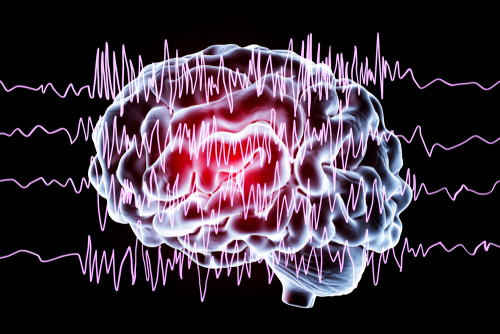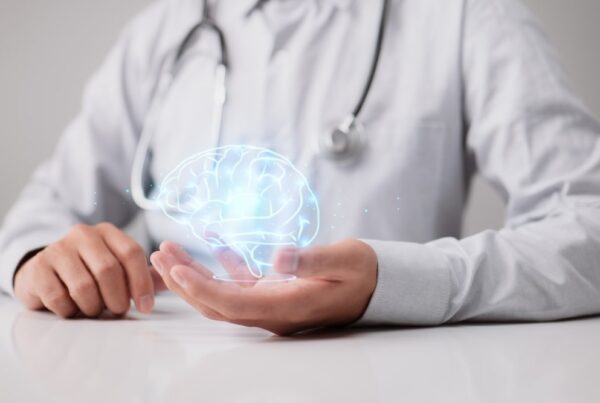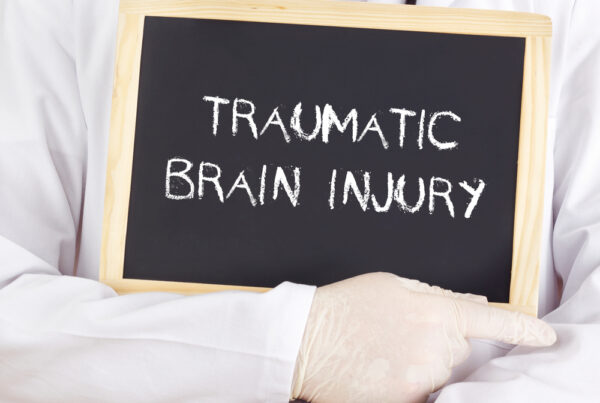What Is a Traumatic Brain Injury (TBI)?
A Traumatic Brain Injury (TBI) refers to a blow to the head that disrupts regular cognitive functions. This jolt to the head can range from a light bump that causes mild and short-term damage to a serious blow that can handicap someone for life.
Unfortunately, TBIs are common throughout the United States, as emergency rooms and hospitals see hundreds of thousands — and sometimes millions — of TBI cases each year.
Understanding Traumatic Brain Injury
When it comes to Traumatic Brain Injury (TBI), there’s more than meets the eye. Understanding the different types of TBI is important for comprehending the varying degrees of impact.
Here’s a breakdown:
- Mild TBI: Often known as a concussion, this type of injury can lead to temporary cognitive changes and typically does not cause long-term damage.
- Severe TBI: Characterized by profound changes in brain function, severe TBI can be life-altering with long-lasting consequences.
- Moderate TBI: Falling between mild and severe, moderate TBI can result in a mix of symptoms and challenges for individuals.
What Are the Risk Factors and Common Causes of TBI?
Several factors play into the occurrence of Traumatic Brain Injuries. Understanding the root causes and risk factors can provide insights into prevention and management.
Traumatic brain injuries can be caused by just about anything — all that needs to happen is a blow to the head.
Some of the most common causes of TBIs, though, include:
- Motor Vehicle Accidents: These incidents are a major cause of head injuries, highlighting the need for safety measures on the road.
- Falls: Especially among older adults, falls can lead to head trauma and potential brain injuries.
- Severe Sports Injuries: Occurring in groups as young as youth sports all the way through professional athletes, sports injuries like concussions are a significant cause of TBI.
- Gunshot Wounds: In cases of violence or accidents, gunshot wounds can result in severe traumatic brain injuries.
What Age Groups Are Typically Affected by TBI?
Traumatic Brain Injuries can affect individuals across all age groups, highlighting the importance of vigilance and care regardless of age.
Let’s explore symptoms, diagnosis, treatment, and the profound impacts of a traumatic brain injury on individuals and their families.
What Are the Symptoms of TBI?
Recognizing the symptoms of TBI and obtaining a timely diagnosis are essential steps in managing this condition effectively. Here’s what to watch out for:
- Blurred Vision
- Memory Loss
- Loss of Consciousness
- Cognitive Impairment
- Emotional Changes
How Is TBI Diagnosed?
TBI is generally diagnosed with one or more of the following methods:
- CT Scan: Utilized to assess brain injuries and internal bleeding.
- Glasgow Coma Scale (GCS): Helps evaluate the level of consciousness after a brain injury.
- Computed Tomography (CT) and Magnetic Resonance Imaging (MRI): Provide detailed pictures of the brain to aid in diagnosis.
What About Treatment and Medical Care?
When it comes to a traumatic brain injury, prompt and appropriate medical care is essential for optimal recovery and management.
Let’s explore the different aspects of treatment and care that play an important role in the journey towards healing:
Initial Care After Head Trauma
- Addressing immediate concerns and stabilizing the patient’s condition.
- Monitoring intracranial pressure and managing complications.
- Providing necessary interventions to prevent further damage.
Medical Care and Intensive Care
- Careful monitoring of vital signs and neurological status.
- Utilizing specialized equipment and techniques to manage intracranial pressure.
- Admission to an intensive care unit may be necessary in severe cases to ensure comprehensive care.
Role of Health Care Providers
- Collaborative efforts by health care providers, including neurologists, neurosurgeons, and rehabilitation specialists.
- Tailored treatment plans to address specific needs and challenges associated with TBI.
- Support and guidance for families and caregivers throughout the treatment process.
What Are the Complications and Long-Term Effects of TBI?
The impact of Traumatic Brain Injury extends beyond the initial injury, often leading to long-term complications and effects on various aspects of health and well-being.
Let’s review some of the key considerations:
Impact on Brain Cells and Tissue
- Damage to brain cells and disruption of neural pathways.
- Potential development of brain tissue abnormalities and consequences on brain function.
Cognitive Impairment and Memory Loss
- Difficulties with memory recall, concentration, and cognitive functions.
- Challenges in processing information and responding to stimuli effectively.
Emotional and Mental Health Effects
- Increased risk of mental health conditions, such as depression and anxiety.
- Behavioral changes and emotional disturbances following a traumatic brain injury.
Chronic Traumatic Encephalopathy
A progressive neurodegenerative disease linked to repetitive head trauma, with symptoms often emerging years after the initial injury.
Recovery and Rehabilitation
Recovery and rehabilitation following a traumatic brain injury are important aspects of the healing journey.
Let’s explore the key elements involved in the process.
Caregiver Support
Caregivers play an essential role in offering physical, emotional, and logistical support to individuals on the path to recovery from TBI. They assist in the path toward healing, ensuring that those affected receive comprehensive care.
Access to various resources and specialized programs empowers caregivers to enhance the quality of support provided, catering to the unique needs of individuals recovering from TBI.
Rehabilitation Programs
Rehabilitation programs for TBI are designed to cater to the individualized needs and challenges faced by those on the path to recovery. These specialized programs employ a multidisciplinary approach, incorporating various therapies such as physical therapy, occupational therapy, speech therapy, and cognitive rehabilitation.
By integrating diverse treatment modalities, rehabilitation efforts aim to address cognitive, physical, and emotional aspects impacted by TBI, facilitating a well-rounded approach to healing and restoration.
Family Involvement in Recovery
Family involvement in the recovery process following TBI is important for fostering a supportive environment and enhancing the chances of successful rehabilitation. The presence of a strong support system, coupled with effective communication strategies, plays a significant role in promoting positive outcomes for individuals recovering from TBI.
Engaging families in the rehabilitation journey and encouraging active participation in the recovery process fosters a sense of unity and encouragement, contributing to the overall well-being and progress of the individual healing from TBI.
Dealing with Deficits and Impairments
Addressing deficits and impairments post-TBI involves implementing strategies to tackle cognitive, physical, and emotional challenges that may emerge during recovery. By setting realistic goals and creating a supportive environment, individuals recovering from TBI can go through their rehabilitation process effectively.
This holistic approach focuses on applying tailored interventions to manage deficits, improve functionality, and bolster emotional well-being, ultimately supporting the overall recovery and adjustment following a traumatic brain injury.
What Are Tips for Preventing Traumatic Brain Injuries?
Prevention is key when it comes to Traumatic Brain Injuries. Explore the following strategies to reduce the risk of TBI and promote safety in various settings.
Seat Belt Use and Safety Measures
Promoting seat belt use and implementing various safety measures in vehicles are essential to reduce the risk of head injuries during accidents. Additionally, including safety features such as airbags and child safety seats in vehicles further reinforces protective measures, ensuring a safer environment for passengers and reducing the severity of the injury sustained during accidents.
Helmets and Protective Gear
Encouraging the consistent use of helmets in activities like biking, skateboarding, and contact sports is essential in preventing head injuries and minimizing the risk of TBI.
Additionally, promoting the utilization of suitable protective gear in occupational settings plays a key role in safeguarding individuals from TBI risks in the workplace. By advocating for adopting protective measures such as helmets and appropriate gear, individuals can significantly reduce the likelihood of head injuries and enhance safety across various environments.
Public Awareness and Education Campaigns
Raising public awareness about TBI and prevention through targeted health campaigns is essential in promoting safety and well-being. By disseminating educational resources and offering training programs, individuals can increase their understanding of TBI and learn about effective safety measures across diverse environments.
These initiatives empower communities to recognize the signs of TBI, adopt preventive measures, and foster a culture of safety that minimizes the risk of head injuries and promotes overall brain health.
Seek TBI Support Today
Haven House Sober Living extends its compassionate and comprehensive support to individuals navigating recovery from TBI. Drawing upon its rich history as a prominent provider of structured sober living environments in Los Angeles, Haven House ensures a safe and monitored space for those seeking solace and healing post-TBI.
Through dedicated support and access to resources promoting holistic healing, Haven House serves as a sanctuary where individuals can find a path toward physical, emotional, and cognitive wellness following Traumatic Brain Injury.
For more information and resources on TBI, check out government resources such as the Centers for Disease Control and Prevention (CDC), National Institutes of Health (NIH), and government websites dedicated to brain injury awareness and support.
Check out Haven House today to get the support you need.
Sources:
Traumatic Brain Injury | Mayo Clinic
Traumatic Brain Injury | Johns Hopkins Medicine



